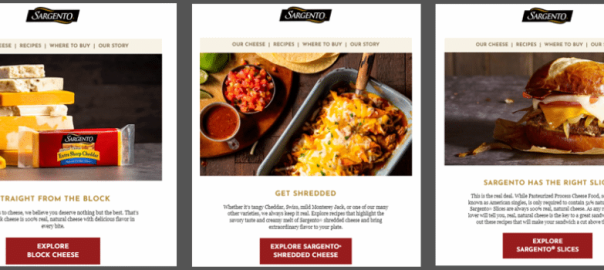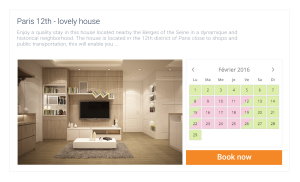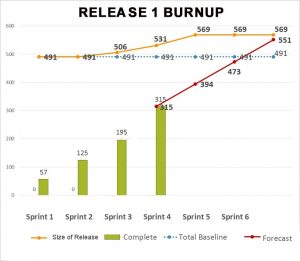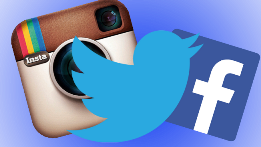Explore the three key ways to integrate AI into email marketing for improved engagement and conversions.
I’m often asked whether we’re using ChatGPT in email marketing campaigns. (This question becomes more frequent as major ESPs rush to release their own version.) Despite genAI’s proliferation, I find the answer easy: we don’t use it for content, aside from maybe using it to generate ideas or as a rudimentary starting point.
For final content generation, your team’s creative minds are far more refined and empathetic to the audience’s needs. That said, there are three distinct ways we do recommend leveraging AI in your email marketing — and they shouldn’t be new to you:
- Send time optimization.
- Personalization/segmentation.
- Product feed recommendations.
Let’s look at each in detail, along with the steps needed to do them well.
Send time optimization
Send time optimization is a relatively under-used technique that helps email marketers dial in the right week, day and time to send messages. These can be set in a couple of ways:
- Identifying the right send time for each individual subscriber.
- Adjusting the overall time for a message based on performance data.
The other piece of send time optimization isn’t just when to send an email; it’s whether to send an email. Einstein, Salesforce’s AI product, has particularly good audience saturation algorithms that identify the subscribers in danger of being over-communicated and those who could use more communication.
A great example of already available (and likely underutilized) email AI functionality is the power to build complex decision trees that automatically optimize the send time for each consumer. Email marketers can use AI to find the moment and intervals that will maximize users’ individual engagement.
Dig deeper: Email marketing strategy: A marketer’s guide
Audience segmentation
Audience segmentation can take many forms: demographics, geographics, psychographics, family status, affinities, existing vs. prospective customers, etc. The more discrete your segments, the more you can tailor your messaging.
For instance, a CPG cheese brand might send nacho recipes to 20-something football fans and grilled cheese sandwich recipes to parents of young kids. Given the right data (which we’ll get to in a minute), just about any ESP makes it easy for you to build dynamic audience segments.
The best friend of great audience segments: a strategic welcome journey that brings rich data for deeper personalization early in the subscriber relationship.
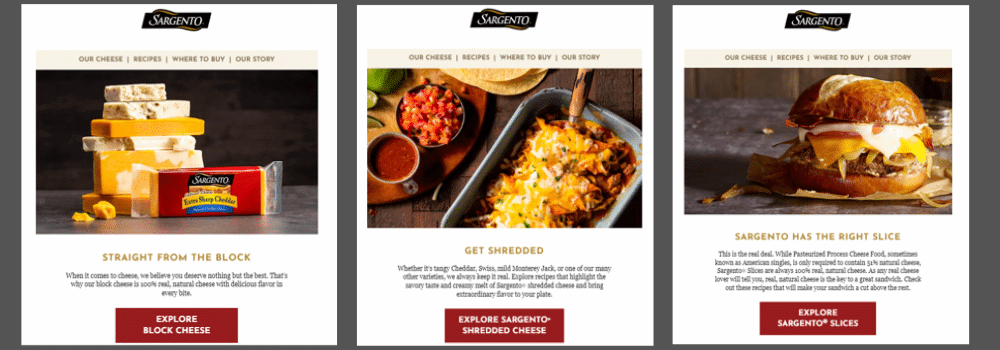
Product feed recommendations
Whether your brand is CPG or ecommerce, there are ways to personalize emails to make them especially relevant to each user. Examples include:
- Product recommendations (based on purchase, browsing and abandonment histories).
- Refill reminders.
- Tips and tricks for product use.
- Recipes customized to user affinities.
- Local sales or partner discounts on CPG products.
- Etc.
I said at the beginning that these weren’t new and this one really isn’t. Amazon was out of the gate with this technology over 20 years ago.
Another intriguing way to experiment with AI is to explore the available product-feed recommendations capabilities within your ESP to measure the engagement and conversion benefits of automating email components.
Preparing your email program for AI
To get good results from the above initiatives, you’ll need to get your house in order on two fronts: data clean-up and email templates.
The first step always comes back to data: make sure it’s clean and filtered, and you’re collecting the kinds of information you need to enable advanced segmentation.
Second, you’ll need to revamp your email templates to feature live text and dynamic elements, such as rewards points earned or membership status. Image-based emails have no custom fields, which limits personalization options off the bat. I love to use content block templates in email design to streamline building dynamic, hyper-personalized emails.
The bonus of these prep steps is that you can benefit from them without leveraging the AI functions mentioned above. You might as well start your prep now, even if you’re slow-playing AI.
Maximizing AI-driven features in your email program
Even though I recommend ChatGPT for limited use in email campaigns today, the steps you take to develop your AI muscles and campaign architecture will help set you up to use it when it is more viable.
Working through the use cases above will pay immediate campaign dividends and build a foundation for incorporating more AI technology in the future. You’ll know more about your audience and have richer data at your fingertips through today’s personalization initiatives, which will only help you leverage AI options to come.
The post 3 ways email marketers should actually use AI appeared first on MarTech.
(7)
Report Post